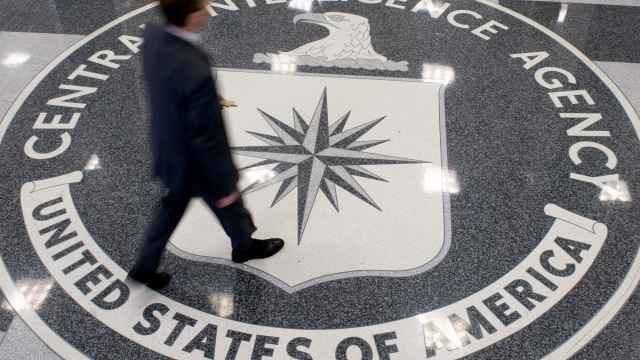The ruble ended a five-day rising streak against the dollar as the firing of Mayor Yury Luzhkov and renewed concern that European deficits will slow the global recovery spurred investors to sell the currency.
The ruble pared its 1.7 percent advance since Sept. 20, weakening 0.2 percent to 30.4328 per dollar at the MICEX close in Moscow. The currency held its decline after the Central Bank kept key interest rates on hold, according to a report published on its web site.
Sovereign downgrades are likely to persist because of deficits and demographic pressure on finances, Standard & Poor’s said Monday. Irish and Portuguese bonds fell Tuesday, sending the yield premium investors demand to hold the securities over benchmark German bonds.
Luzhkov’s ousting “may cause capital outflows in the very short term, which would be ruble negative,” said Alexander Morozov, chief economist at HSBC in Moscow. “Since Luzhkov’s dismissal has been on the political agenda for a while, some outflows have already occurred.” Moscow accounts for almost a quarter of Russia’s gross domestic product.
The ruble was little changed at 41.1036 per euro. The Central Bank buys and sells dollars and euros to keep the currency within a 33.40 to 36.40 corridor against a target dollar-euro basket. The ruble was 0.2 percent weaker against the basket, which is used to mitigate currency swings that hurt exporters, trading at 35.2943.
The mayor’s firing will have a small and “short-lived” impact on the ruble because the news was expected by the market, said Denis Korshilov, head of foreign exchange trading in Moscow at Citigroup. “Some speculators may try to go long basket using this as an excuse,” he said, referring to bets that a security is going to appreciate.
City of Moscow ruble bonds due 2022 fell, pushing the yield 1 basis point higher to 7.9 percent. Russian government dollar bonds due 2020 rose for a fourth trading day, pushing the yield 5 basis points lower to 4.503 percent.
Rumors that Luzhkov's billionaire wife is withdrawing funds from Russia have bolstered the ruble’s volatility against the basket over the past few weeks, said Alexei Moiseyev, chief economist and deputy head of research at VTB Capital, the investment banking arm of Russia’s second-largest bank. One-month dollar-ruble implied volatility, a measure of expected swings in the currency, was at 9.4 percent, from a one month high of 10.5 percent on Sept. 16.
Investors increased bets that the ruble will weaken, with nondeliverable forwards showing the currency at 30.7875 per dollar in three months, compared with 30.7747 on Monday. The contracts, known as NDFs, are a way of gauging the likely direction of currencies as they allow companies to hedge against exchange-rate fluctuations and foreign investors to speculate on currencies of countries that limit their participation.
Options traders reduced bets that the ruble will depreciate against the dollar, with the currency’s one-week risk-reversal rate — the premium of put options over calls — falling to 1.25 percent Tuesday, from 2 percent last week.
A Message from The Moscow Times:
Dear readers,
We are facing unprecedented challenges. Russia's Prosecutor General's Office has designated The Moscow Times as an "undesirable" organization, criminalizing our work and putting our staff at risk of prosecution. This follows our earlier unjust labeling as a "foreign agent."
These actions are direct attempts to silence independent journalism in Russia. The authorities claim our work "discredits the decisions of the Russian leadership." We see things differently: we strive to provide accurate, unbiased reporting on Russia.
We, the journalists of The Moscow Times, refuse to be silenced. But to continue our work, we need your help.
Your support, no matter how small, makes a world of difference. If you can, please support us monthly starting from just $2. It's quick to set up, and every contribution makes a significant impact.
By supporting The Moscow Times, you're defending open, independent journalism in the face of repression. Thank you for standing with us.
Remind me later.





